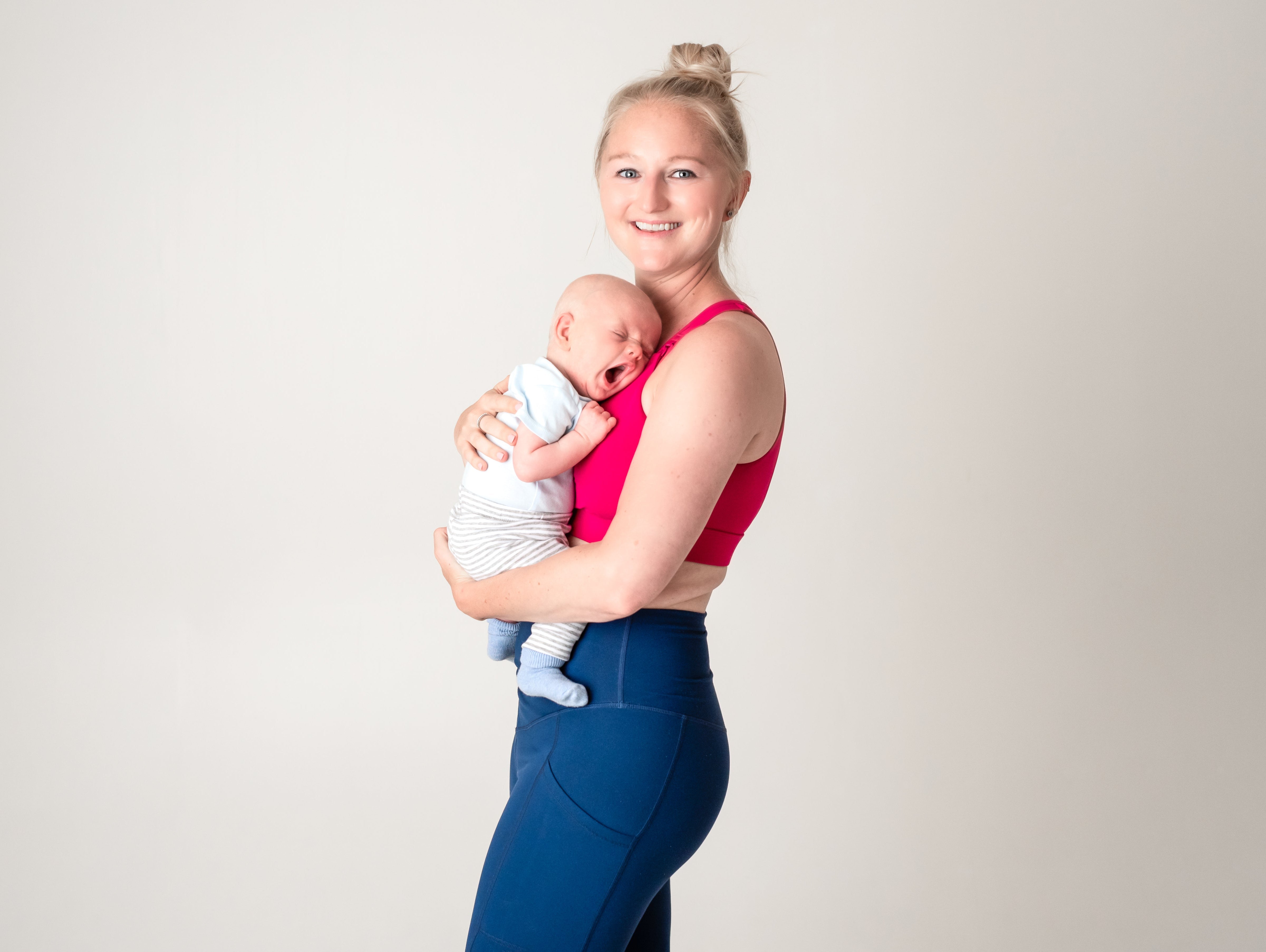If you are experiencing Pelvic Girdle Pain (PGP) in your pregnancy, yoga is a great way to help ease your symptoms. Lucy from Butterbean, the online hypnobirthing platform for expectant parents, looks at what causes PGP, what it actually is and what you can do to ease the pain.
Understanding Pelvic Girdle Pain
Have you ever felt a sharp sting or a dull ache in your pelvis while dressing up or changing positions in bed? If yes, you're not alone. Up to one in five women experience pelvic girdle pain (PGP) during pregnancy. The pain doesn’t have to be described as a sting or an ache, it can be any type of pain or discomfort within the pelvic region which includes your pelvis, hips or thighs.
The good news? You don't have to grin and bear it. There are effective ways to manage the discomfort. One such approach is yoga.
Avoiding high impact exercise and sitting for long periods is key. Why? Because what eases pelvic pain is very gentle, subtle, soft movement of the joints. Practicing pregnancy yoga is a way of introducing movement that compliments manoeuvring the joints, encouraging steady blood flow and building strength. Plus, yoga is great for mindfulness which can be essential during pregnancy!
What is Pelvic Girdle Pain?
Pelvic Girdle Pain is an overarching term used to describe any form of pelvic discomfort, which can range from stabbing pains at the front of your pelvis to dull aches at the back. It covers the entire pelvic region which includes thighs, hips, sacroiliac joints, pubic symphysis and the lumber spine. You may have it in all or just some of the areas around the pelvis and it could occur during pregnancy or right after childbirth.
Having pelvic girdle pain can be really miserable. Keep reading to understand it better and find a solution that works for you!
What Causes Pelvic Girdle Pain?
The hormonal changes that come with pregnancy play a key role in PGP. The hormone relaxin loosens ligaments and expands joints to make room for your growing baby. Unfortunately, this can lead to muscle imbalances, putting extra strain on the pelvic area.
Additional Factors Contributing to PGP
But hormones aren't the only culprits here. We are all built differently, no body is the same and so your PGP may be different to someone else’s. You may also not experience any discomfort at all! PGP isn’t a guaranteed symptom of pregnancy.
Your lifestyle, previous injuries, and how you move can all add to the strain. In short, it's complicated, and there's no one-size-fits-all explanation.
Are You at Risk?
Certain factors may raise the likelihood of developing PGP:
- Previous pregnancies
- Joint hypermobility
- Excess weight
- Previous lower back or hip pain which includes PGP in a previous pregnancy
- Prior pelvic injuries
What Does Pelvic Girdle Pain Feel Like?
The pain can range from mild to severe and might manifest in different areas like the inner thigh, the lower back, or even the buttocks. It can make activities like standing on one leg excruciatingly painful. Simply sitting for long periods can also be troublesome. Some women describe the feeling like a grinding or extreme soreness. PGP isn’t to be underestimated, for a small number of women it can be debilitating. Thankfully, most experience mild pain which disappears once your baby has been born.
The Importance of Movement
You might think rest is the best medicine, but actually, inactivity can worsen PGP. This is because lack of blood flow in the affected area can cause stiffness and this exasperates the pain. You may experience more pain in the morning after you’ve been asleep and not moving – this is typical for those suffering with PGP.
Keeping active with exercises that work for you is essential. Whether it's swimming, walking, or yoga, the key is to find what feels right for you. Even just a morning walk or simple yoga flow first thing can work wonders and set you up for the day ahead.
If your job involves sitting at a desk, be sure to get up for a short walk every 90 minutes or so. This will help your symptoms to ease and will make your day to day less painful.
How Yoga Can Help
Yoga, often considered the mind-body therapy, can be extremely effective for PGP. It's not just about flexibility but also about strengthening your core and stabilising your joints. Yoga classes often consist of continual movement using most of the body all the same time. This means that blood flow is high and your joints will be benefiting from gentle manoeuvring.
A core part of the human body is the pelvis. The pelvis is a support structure at the centre of everything. This means that most yoga poses incorporate movement of the pelvis and this will help lessen the soreness you may be experiencing during pregnancy.
Effective Yoga Poses for PGP
What can exacerbate PGP? Standing on one leg or taking the legs too wide. This will put pressure on the pelvis and won’t help to lessen the pain.
If you’re suffering from PGP and you’re attending a yoga class be sure to tell the teacher – they should then prompt you throughout the class so you can avoid poses that might hurt. These will include poses such as tree, pigeon or cobblers pose.
The poses that may help will be child’s pose, downward facing dog and chair pose. All of these yoga poses involve keeping feet hip width apart and not balancing on one leg.
If your class does involve balancing or wide legged pose then do ask for alternatives or just bring the legs closer together so you can still join in with the entire class and benefit from the movement and mindfulness of pregnancy yoga.
Pregnancy-Specific Yoga and Pilates Classes
Pelvic Girdle Pain is a common but highly manageable condition, especially with the strategic use of yoga. By combining strengthening and hip-opening poses, you can create a healthy foundation for a comfortable pregnancy and beyond. So, why suffer in silence when help is at hand?
Butterbean offers tailored pregnancy yoga classes that can supplement your regular practice and offer additional support and community during this special time in your life, with classes are included within our online hypnobirthing course.
Frequently asked questions
- Can yoga completely cure Pelvic Girdle Pain?
Yoga can alleviate symptoms but it's essential to consult a healthcare provider for a comprehensive treatment plan.
- Is it safe to start yoga during pregnancy for PGP?
- How often should I practice yoga for PGP?
- What are some other exercises beneficial for PGP?
- Is hypnobirthing essential when dealing with PGP?
Butterbean is an online hypnobirthing platform for expectant parents to find support and information during pregnancy, birth and beyond. Learn more by visiting www.butterbean.uk. Butterbean adapts every class so that they’re accessible to anyone suffering from PGP and offers tailored pregnancy yoga classes, with classes included within their online hypnobirthing course.




